Co-production in research with communities
The central axis of the platform is people and territories. In the communities that make up Tramas Urbanas, partnerships have been established with local organizations and/or collectives committed to producing information about the history and realities of these communities. These include the UNAS – União de Núcleos, Associações dos Moradores de Heliópolis e Região (Sao Paulo), Mesa Activa por la Re-Urbanización de Villa 20 (Buenos Aires) and Corporación Mi Comuna (Medellin). The “Tramas Urbanas” platform thus complements and articulates the efforts already underway in the communities themselves.
Working with researchers from these community organizations was a decision made to ensure that they had control over both the outcomes and the process of creating and recording each community’s trajectory. The timelines presented here are the result of a meeting between academic researchers, community organizations, and residents. They represent one of many possible outcomes, given the numerous and heterogeneous collectives and organizations that exist in each of the territories represented.
Encourage dialogue and discussion about the contributions of history to the present and the future.

The research that gave rise to this platform examines how government action has changed in relation to popular settlements in Latin America and the type of public policy solution that has allowed their consolidation and urban integration. The choice of the three cities studied (Buenos Aires, Medellin and Sao Paulo) was based on the recognition of this type of policy at the municipal level in recent decades.
The timelines of municipal and national public policies aimed at popular settlements in Sao Paulo, Buenos Aires and Medellin were drawn up on the basis of bibliographic systematization, complemented by interviews with professionals who played a relevant role in implementing the policy in general, and especially in the territories highlighted by the platform.
The information was organized according to the following categories: institution, legislation and plan, program and project. The local or municipal scale was privileged and related to milestones in housing and urban policy at the national or federal level.
The selection of communities in each city was based on two criteria: The existence of interventions related to different moments and approaches within municipal policies, and the establishment of a link with a local organization interested in the Platform’s project.
The timelines of the communities were constructed based on bibliographic systematization, material produced by local organizations, field trips, conversations and interviews with residents and leaders of each community. In addition, two workshops were held in Heliópolis and a round table in Villa 20.
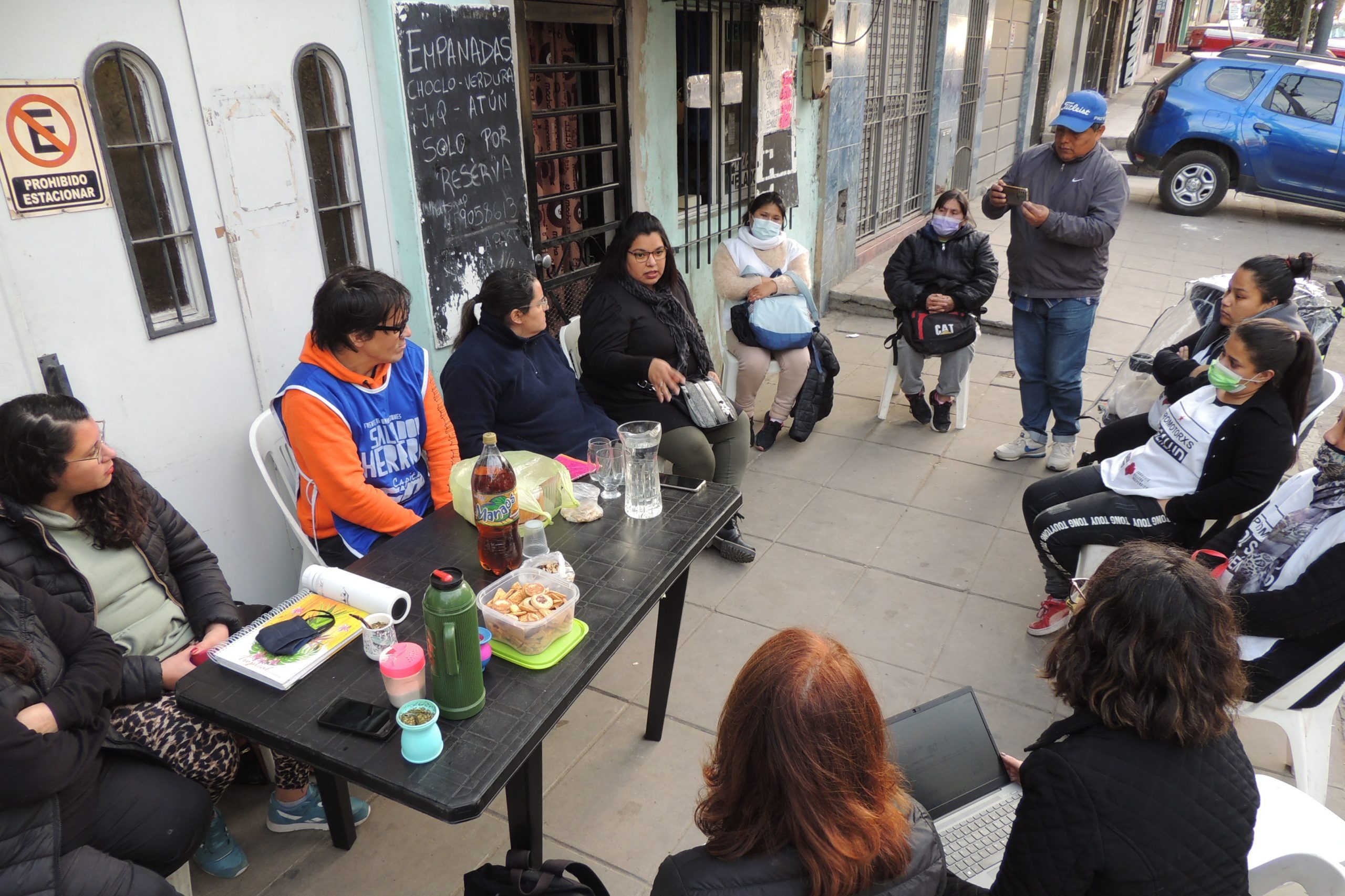
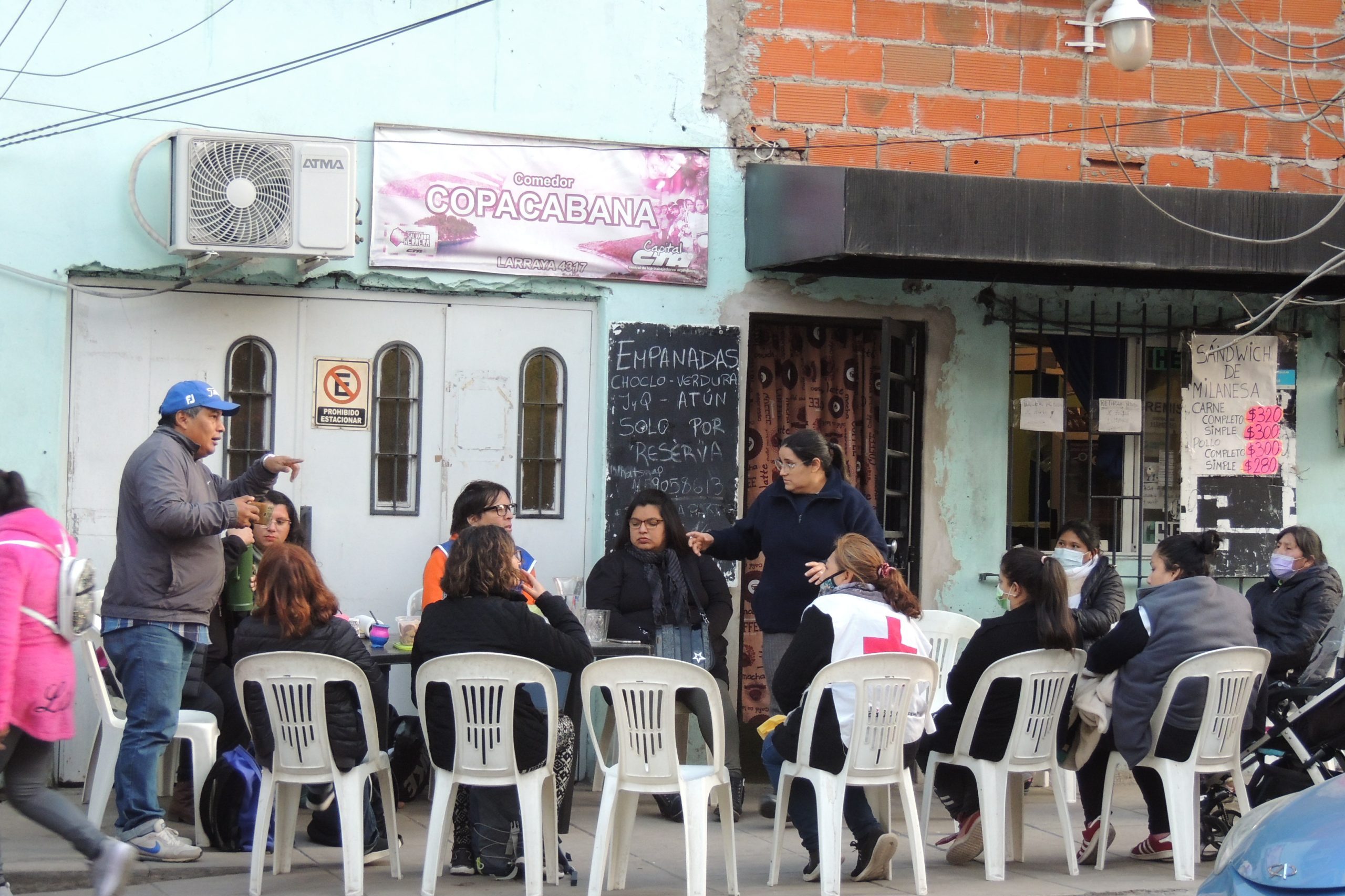
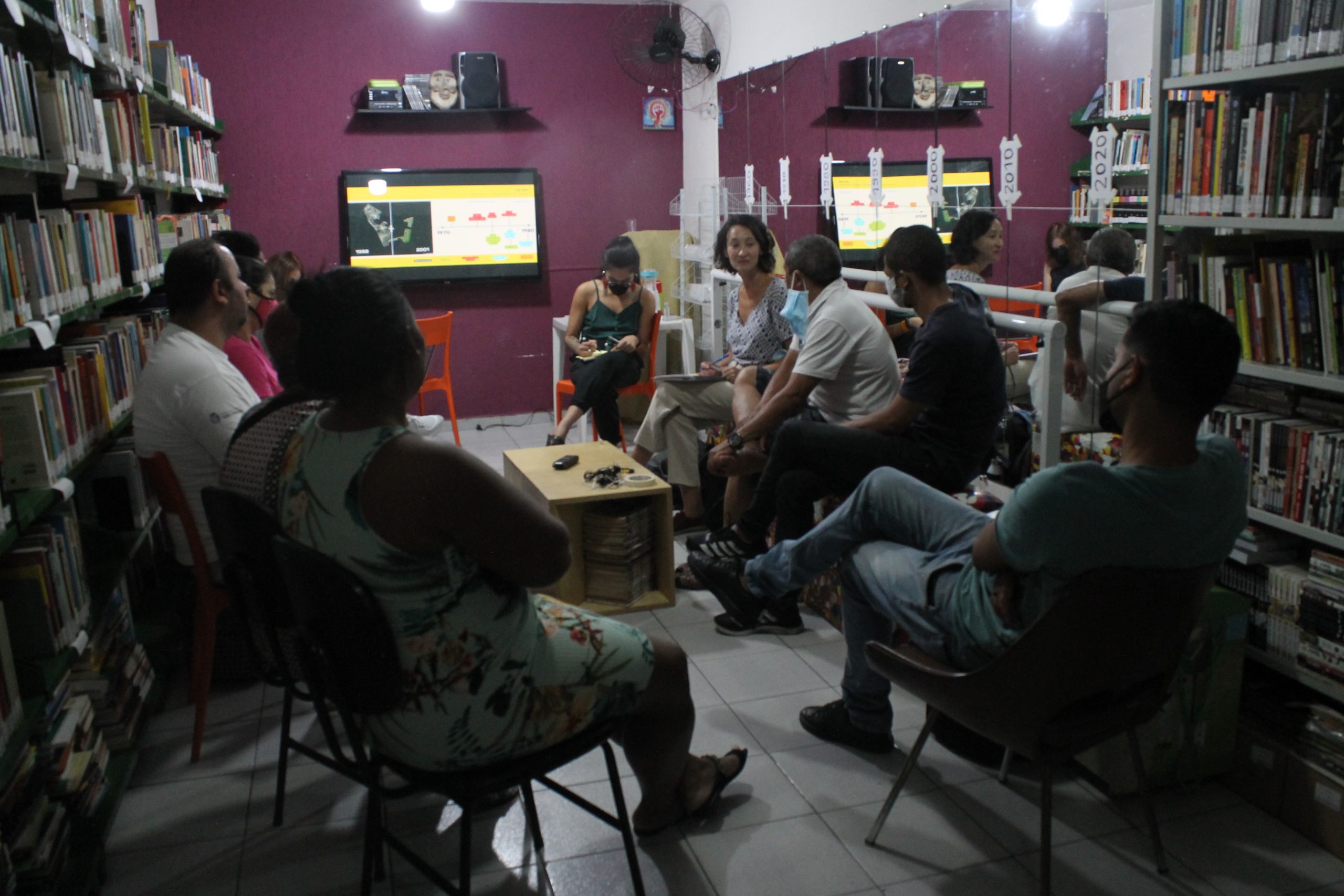
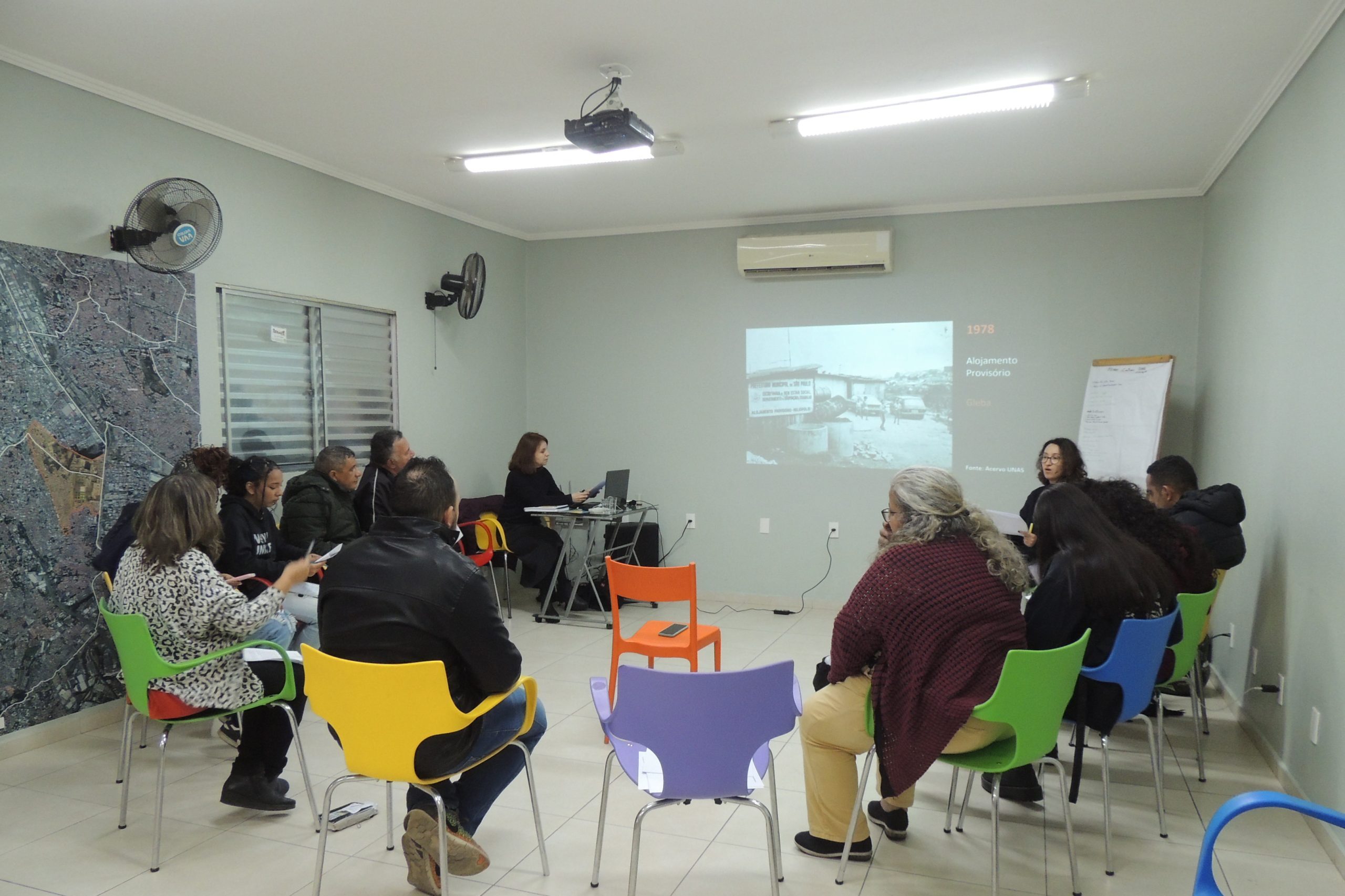
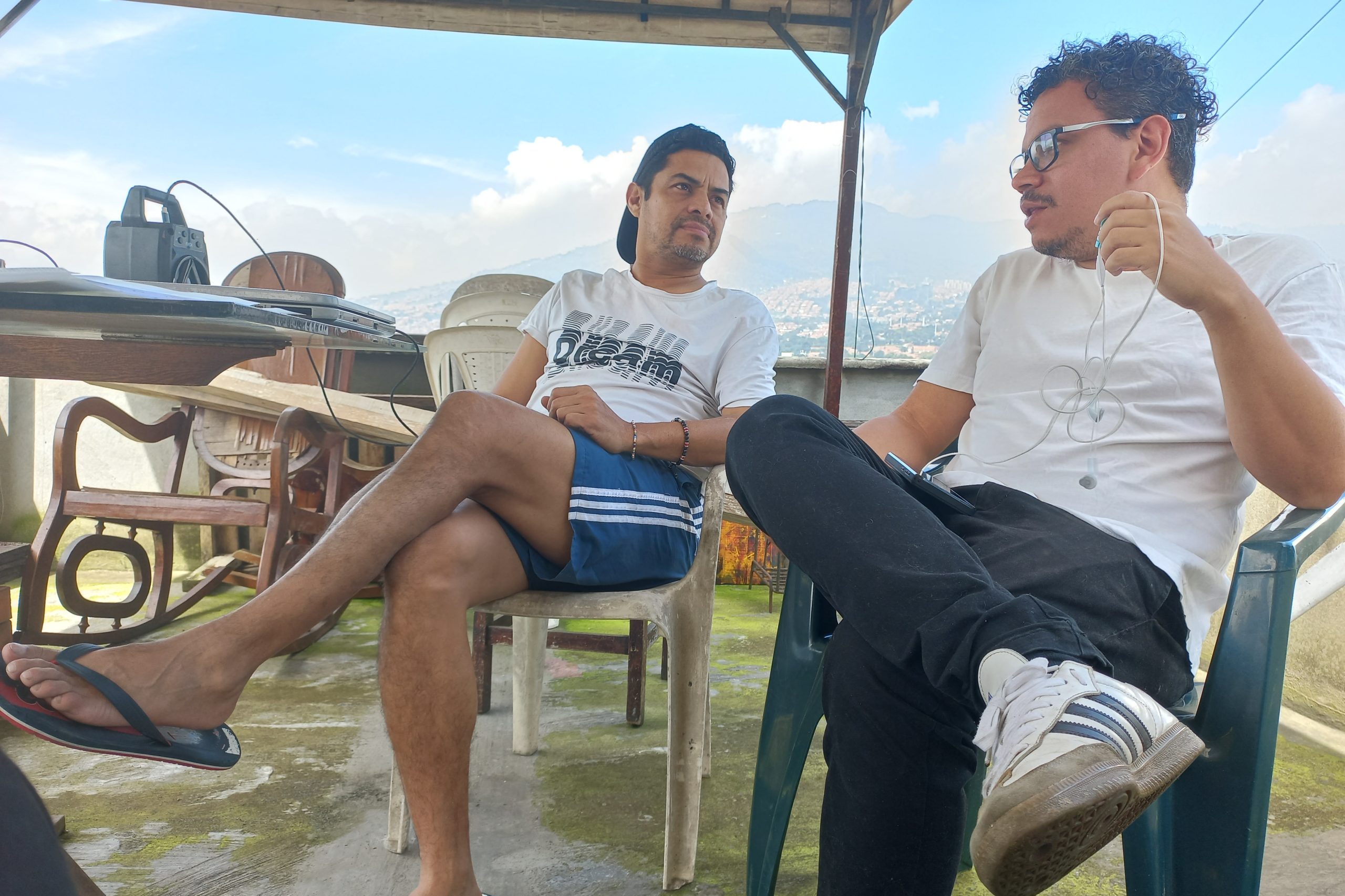
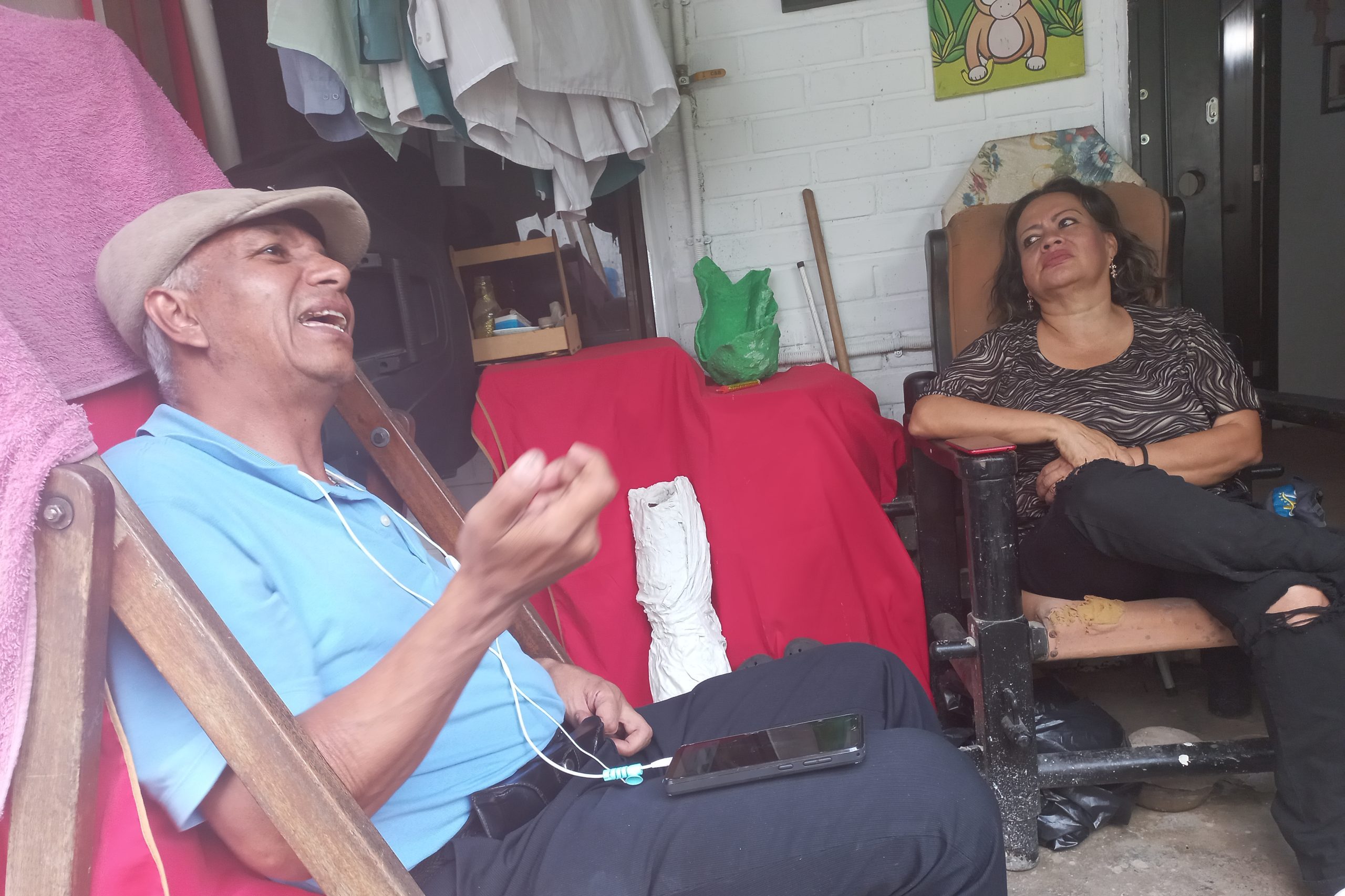
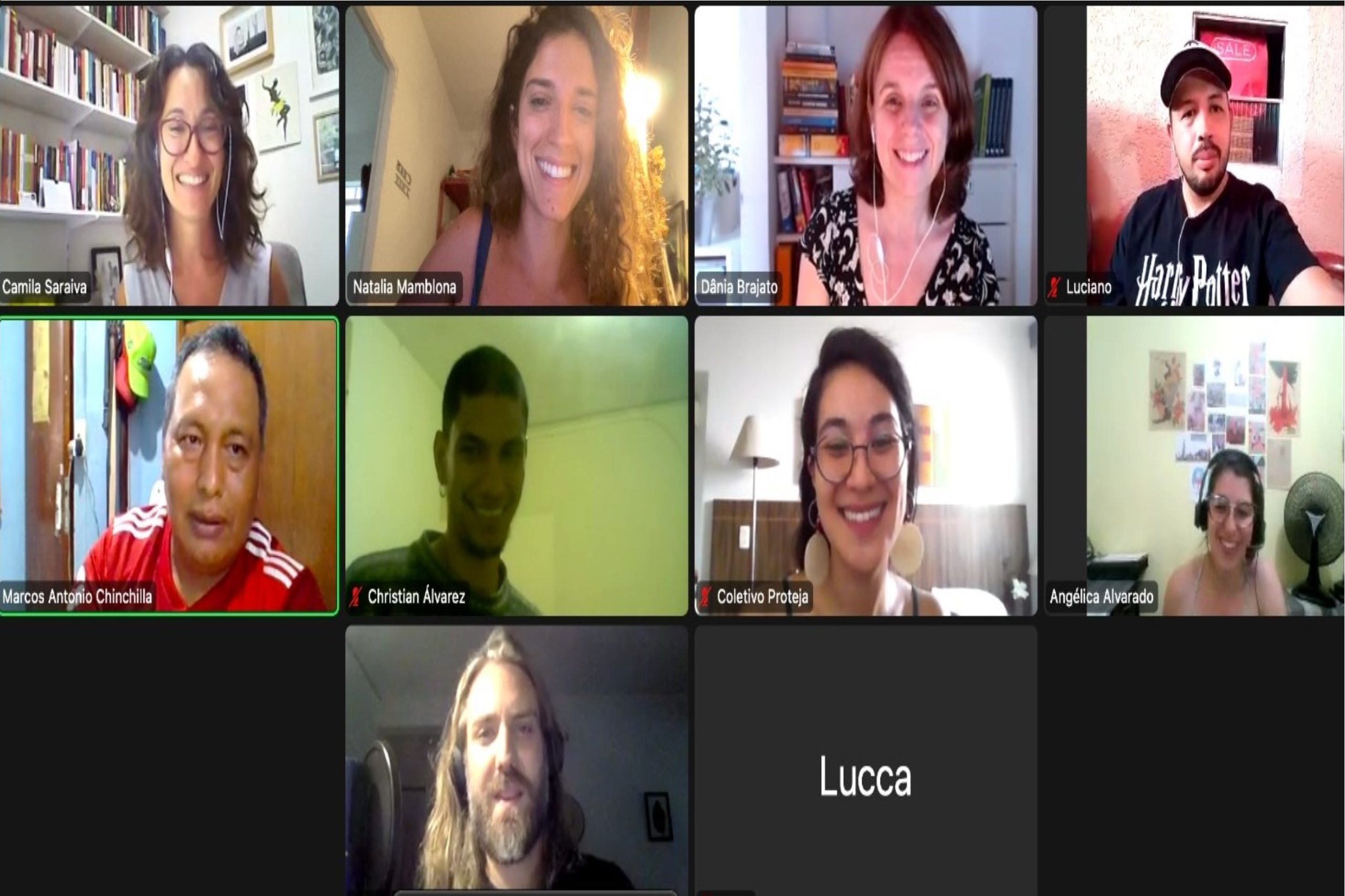
The information, spatial and symbolic references and reports were organized according to the following categories: emergence, history of the movement, episodes of resistance, interventions in the territory, public facilities, land ownership, violence, leisure facilities and local plans.
From the beginning, Coletiva Enxame contributed to the development of the project by developing methodologies for the production of the website. Coletiva’s contribution was mainly essential in the Collective Ideation phase of the digital platform, i.e. the methodology for co-creating the proposal for the virtual environment, with the structuring of the content (page architecture) and guidelines for the visual identity of the project. Taking into account the different communities involved, the different languages and the need to carry out the activity virtually, Coletiva Enxame designed a methodology and a dynamic that would take into account the diversity of the participants in order to guarantee communication and interaction between all of them. Simultaneous translation in the workshops during this phase was essential for the success of the results achieved.
Project Information
Project design, coordination and research
Camila Saraiva (UFABC)
Dânia Brajato (UFABC)
Research and interviews in the communities
Christian López (Mazo – UdeA / Corporación Mi Comuna)
Luciano Lima (Movimento Sem Teto de Heliópolis/UNAS)
Marcos Antônio Chinchilla (Espacio de los Jueves/Mesa Activa por la Re-Urbanización de Villa 20)
Communication, graphic facilitation and methodological support
Coletiva Enxame: Midori Hamada e Natália Mamblona
Research and systematization assistance
Angélica Santamaría (UFABC), Felipe Moreira (USP), Gabriel Machado (UFABC), Gildivan Felix (UNAS), Lucas Manoel da Silva (Movimento Sem Teto de Heliópolis/UNAS), Lucca Franco (UFABC), Manuel Otaviano (Movimento Sem Teto de Heliópolis/UNAS) e Matheus Graciosi (UFABC)
Participation in workshops and interviews
Heliópolis
Adeilva Delmondes de Santana, Aline da Silva Isaías, Antonia Cleide, Ariadne de Lima Damasceno, Deise Almeida dos Santos, Douglas Cavalcante, Fabio Roseira, José Genário Pereira de Araújo, Kátia Rodrigues Martins Roseira, João Albino Rodrigues Martins Roseira, João Miranda, Joaquim José Santana Neto, Josilene Dias dos Santos, Maria do Carmo Galvão de Souza, Marilene Rosa da Conceição, Mércia Maria Ribeiro, Raissa Teixeira Genu, Reginaldo Gonçalves, Sabrina Santos, Solange de Paula Pinto, Stephany de Novais Rocha e Teresa Maria Rodrigues
Villa 20
Alba Martinez, Arnaldo Rafael Videla (in memoriam), Clara Daiana Insfran Avalos, Constantina Gutiérrez Copa, Ema Ruiz, Johana Benítez, Ivana Navarro, Jorge Roberto Bordón, Leila Caliente, Leonidas Manuel Chaparro, Rosalina Ferreira Diaz, Victor Jorge Sahonero, Yamila Andrea Dubinsky
Comuna 2
Angela Álvarez Hernández (Moscú 1), Duván Londoño (Villa Niza), Jorge Crespo (Villa del Socorro), Luz Marina Gómez – “Zarca” (La Francia), Marlene Castañeda (Santa Cruz – parte alta), Marta Cardona (La Frontera), Rafael Augusto Restrepo Agudelo (Villa Niza), Teresa Arbeláez (Villa del Socorro)
Interpreting and translation of ideation workshops
Angélica Santamaría e Instituto Dialética
References
Akaishi, A. G., Saraiva, C. P., Cardoso, L. C., & Silva, P. C. (2018). O programa de aceleração do crescimento no contexto das urbanizações de favela em São Paulo. In A. L. Cardoso, & R. Denaldi (Orgs.), Urbanização de favelas no Brasil: um balanço preliminar do PAC (pp. 49-74). Letra Capital.
https://www.observatoriodasmetropoles.net.br/wp-content/uploads/2019/06/Adauto-CARDOSO-e-Rosana-DENALDI-Urbaniza%C3%A7%C3%A3o-de-favelas-no-Brasil.pdf.
Albuquerque, M. J. de (2006). Verticalização de favelas em São Paulo: balanço de uma experiência (1989 a 2004). [Tese de Doutoramento]. Faculdade de Arquitetura e Urbanismo da Universidade de São Paulo. https://www.teses.usp.br/teses/disponiveis/16/16131/tde-18112010-141931/publico/Tese_Completa.pdf.
Brasil. (2014). PAC2: a gente faz um Brasil de oportunidades: balanço: 4 anos: 11° balanço: 2011 a 2014. https://bibliotecadigital.economia.gov.br/handle/777/366.
Bueno, L. M. D. M. (2000). Projeto e favela: metodologia para projetos de urbanização. [Tese de Doutoramento]. Faculdade de Arquitetura e Urbanismo da Universidade de São Paulo.
Cardoso, A. L., & Denaldi, R. (2018). Urbanização de favelas no Brasil: um balanço preliminar do Programa de Aceleração do Crescimento (PAC). In A. L. Cardoso, & R. Denaldi (Orgs.), Urbanização de favelas no Brasil: um balanço preliminar do PAC (pp. 17-48). Letra Capital. https://www.observatoriodasmetropoles.net.br/wp-content/uploads/2019/06/Adauto-CARDOSO-e-Rosana-DENALDI-Urbaniza%C3%A7%C3%A3o-de-favelas-no-Brasil.pdf.
COHAB-SP – Companhia Metropolitana de Habitação de São Paulo. (s.d.). História. http://cohab.sp.gov.br/Historia.aspx.
D’Alessandro, M. L. S. (1999). Avaliação da política de urbanização de favelas em São Paulo no período 1989/1992. [Master Thesis]. Fundação Getúlio Vargas. https://bibliotecadigital.fgv.br/dspace/handle/10438/5368.
Ferreira, P. E. B. (2017). O filé e a sobra: as favelas no caminho do capital imobiliário. [PhD Thesis]. Faculdade de Arquitetura e Urbanismo da Universidade de São Paulo. https://teses.usp.br/teses/disponiveis/16/16137/tde-22062017-162710/pt-br.php.
França, E. (2009). Favelas em São Paulo (1980-2008): das propostas de desfavelamento aos projetos de urbanização: a experiência do programa Guarapiranga. [PhD Thesis]. Faculdade de Arquitetura e Urbanismo da Universidade Presbiteriana Mackenzie. https://dspace.mackenzie.br/items/22953cc8-cd6c-4caa-a8e4-03308f9a70a7.
MDR – Ministério do Desenvolvimento Regional. (s.d.). Sistema Nacional de Habitação de Interesse Social. https://www.gov.br/mdr/pt-br/assuntos/habitacao/sistema-nacional-de-habitacao-de-interesse-social.
Moreira, F. de F. (2017). Heliópolis e as estratégias de enfrentamento da cidade real. [Master Thesis]. Faculdade de Arquitetura e Urbanismo da Universidade de São Paulo. https://teses.usp.br/teses/disponiveis/16/16137/tde-13062017-124549/pt-br.php.
Pasternak, S. (2010). Evolução espacial dos loteamentos irregulares em São Paulo. In Da irregularidade fundiária urbana à regularização: análise comparativa Portugal-Brasil. EDUC.
Prefeitura de São Paulo. (s.d.). Secretaria Municipal de Habitação. https://www.prefeitura.sp.gov.br/cidade/secretarias/habitacao/acesso_a_informacao/institucional/index.php?p=240656.
Prefeitura de São Paulo. (s.d.). Conselho Municipal de Habitação. https://www.prefeitura.sp.gov.br/cidade/secretarias/habitacao/participacao_social/conselhos_e_orgaos_colegiados/cmh/.
Prefeitura de São Paulo. (2023). Prefeitura entrega 240 moradias em conjunto habitacional em Heliópolis. https://www.prefeitura.sp.gov.br/cidade/secretarias/habitacao/noticias/?p=341598.
Prefeitura de São Paulo; COHAB-SP – Companhia Metropolitana de Habitação de São Paulo. (2016). Heliópolis. Plano de ZEIS.
Pulhez, M. M. (2022). Gestão e governança urbana em São Paulo: agentes e arranjos de implementação da política habitacional local. Cadernos Jurídicos, 23 (62), 133-144.
Sampaio, M. R. A. de. (1991). Heliópolis: o percurso de uma invasão. [Full Professor’s Thesis]. Faculdade de Arquitetura e Urbanismo da Universidade de São Paulo.
Saraiva, C. P., Brajato, D., Moreira, F. de F., & Denaldi, R. (2021). Recuperar el passado para pensar el futuro: urbanización de las favelas em São Paulo y los desafios pos-pandemia. In M. A Barreto, & E. R. Abildgaard, II Encuentro de la red de asentamientos populares – ENRAP: pandemia, crisis y oportunidades para el hábitat popular (pp. 643-665). https://repositorio.unne.edu.ar/handle/123456789/30374.
Saraiva, C. P. (2008). A periferia consolidada em São Paulo: categoria e realidade em construção. [Master Thesis]. Instituto de Pesquisa e Planejamento Urbano e Regional, Universidade Federal do Rio do Janeiro.
Souza, R. C. L. de (2023). A (des)articulação das políticas públicas na produção do espaço urbano. O caso de Heliópolis. [Master Thesis]. Faculdade de Arquitetura e Urbanismo da Universidade de São Paulo.
UNAS – União de Núcleos, Associações dos Moradores de Heliópolis e Região. (2022). Após anos de reivindicações, Favela de Heliópolis irá ganhar um parque. https://www.unas.org.br/single-post/favela-de-heliopolis-ira-ganhar-um-parque.
UNAS – União de Núcleos, Associações dos Moradores de Heliópolis e Região. (2023). Linha do Tempo do Museu Heliópolis.
Zuquim, M. de L. (2012). Urbanização de assentamentos precários no município de São Paulo: quem ganha e quem perde? In Teorias e práticas na arquitetura e na cidade contemporâneas: complexidade, mobilidade, memória e sustentabilidade – II Encontro da Associação Nacional de Pesquisa em Arquitetura e Urbanismo (II ENANPARQ).
Wikipédia. A enciclopédia livre. (s.d.). Hospital Heliópolis. https://pt.wikipedia.org/wiki/Hospital_Heli%C3%B3polis#:~:text=Criado%20em%201969%2C%20o%20Hospital,Faculdade%20de%20Medicina%20do%20ABC.
Brazil (1964). Federal Law No. 4.380, of August 21, 1964. Institutes monetary correction in real estate contracts of social interest, the financial system for home ownership, creates the National Housing Bank (BNH), and Real Estate Credit Companies, Real Estate Bills, the Federal Housing and Urban Planning Service and makes other provisions. https://www.planalto.gov.br/ccivil_03/leis/l4380.htm.
Brazil (1979). Federal Law No. 6.766, of December 19, 1979. Provides for the Parceling of Urban Land and other Provisions. https://www.planalto.gov.br/ccivil_03/leis/l6766.htm.
Brazil (1988). Constitution of the Federative Republic of Brazil, of October 5, 1988. https://www.planalto.gov.br/ccivil_03/constituicao/constituicao.htm.
Brazil. (2001). Federal Law No. 10.257, of July 10, 2001. Regulates articles 182 and 183 of the Federal Constitution, establishes general guidelines for urban policy and makes other provisions. https://www.planalto.gov.br/ccivil_03/leis/leis_2001/l10257.htm.
Brazil (2005). Federal Law No. 11.124, of June 16, 2005. Provides for the National Social Interest Housing System – SNHIS, creates the National Social Interest Housing Fund – FNHIS and establishes the FNHIS Management Council. http://www.planalto.gov.br/ccivil_03/_ato2004-2006/2005/lei/l11124.htm.
Brazil (2009). Federal Law No. 11.977, of July 7, 2009. Provides for the My House, My Life Program – PMCMV and land regularization of settlements located in urban areas; amends Decree-Law No. 3.365, of June 21, 1941, Laws No. 4.380, of August 21, 1964, No. 6.015, of December 31, 1973, No. 8.036, of May 11, 1990, and No. 10.257, of July 10, 2001, and Provisional Measure No. 2.197-43, of August 24, 2001; and makes other provisions. https://www.planalto.gov.br/ccivil_03/_ato2007-2010/2009/lei/l11977.htm.
Brazil (2017). Federal Law No. 13.465, of July 11, 2017. Provides for rural and urban land regularization, establishes mechanisms to improve the efficiency of procedures for the sale of federal real estate; and makes other provisions. https://www.planalto.gov.br/ccivil_03/_ato2015-2018/2017/lei/l13465.htm.
São Paulo (Municipality). (1977). Municipal Decree No. 14.451, of March 24, 1977. Creates the Department of Housing and Urban Development, and makes other provisions. https://legislacao.prefeitura.sp.gov.br/leis/decreto-14451-de-24-de-marco-de-1977#:~:text=DECRETA%3A,uso%20do%20solo%2C%20no%20Munic%C3%ADpio.
São Paulo (Municipality). (2003). Municipal Decree 43.231, of May 22, 2003. Regulates the Urban Development Fund, created by Law no. 13.430, of September 13, 2002, which approved the Strategic Master Plan. https://legislacao.prefeitura.sp.gov.br/leis/decreto-43231-de-22-de-maio-de-2003.
São Paulo (Municipality). (1965). Municipal Law No. 6.738, of November 16, 1965. Authorizes the constitution of the Metropolitan Housing Company of São Paulo (COHAB-SP), and makes other provisions. https://legislacao.prefeitura.sp.gov.br/leis/lei-6738-de-16-de-novembro-de-1965#:~:text=LEI%20N%C2%BA%206738%2C%20DE%2016,)%2C%20and%20d%C3%A1%20other%20provid%C3%AAncias.
São Paulo (Municipality). (1979). Municipal Law no. 8.906, of April 27, 1979. Provides for the creation of the Fund for Assistance to People Living in Substandard Housing – FUNAPS, and makes other provisions. https://leismunicipais.com.br/a/sp/s/sao-paulo/lei-ordinaria/1979/891/8906/lei-ordinaria-n-8906-1979-dispoe-sobre-a-criacao-do-fundo-de-atendimento-a-populacao-moradora-em-habitacao-subnormal-funaps-e-da-outras-providencias.
São Paulo (Municipality). (1986). Municipal Law No. 10.237, of December 17, 1986. Restructures the Department of Housing and Urban Development, creates the corresponding positions, and makes other provisions. https://legislacao.prefeitura.sp.gov.br/leis/lei-10237-de-17-de-dezembro-de-1986#:~:text=LEI%20N%C2%BA%2010.237%2C%20DE%2017,lhe%20s%C3%A3o%20conferidas%20por%20lei.
São Paulo (Municipality). (1986). Municipal Law no. 10.209, of December 9, 1986. Provides for the construction of social housing for residents of sub-standard housing, grants incentives, and makes other provisions. https://legislacao.prefeitura.sp.gov.br/leis/lei-10209-de-09-de-dezembro-de-1986.
São Paulo (Municipality). (1994). Municipal Law No. 11.632, of July 22, 1994. Provides for the establishment of an integrated housing policy, aimed at the low-income population; authorizes the institution, with the São Paulo Metropolitan Housing Company – COHAB/SP, of the Municipal Housing Fund; creates the Municipal Housing Fund Council, and makes other provisions. https://legislacao.prefeitura.sp.gov.br/leis/lei-11632-de-22-de-julho-de-1994#:~:text=Disp%C3%B5e%20sobre%20o%20estabelecimento%20de,Habita%C3%A7%C3%A3o%2C%20e%20d%C3%A1%20outras%20provid%C3%AAncias%20.
São Paulo (Municipality). (2002). Municipal Law no. 13.425, of September 2, 2002. Regulates article 168 of the Organic Law of the Municipality of São Paulo and establishes the Municipal Housing Council of São Paulo. https://legislacao.prefeitura.sp.gov.br/leis/lei-13425-de-02-de-setembro-de-2002.
São Paulo (Municipality). (2002). Municipal Law No. 13.430, of September 13, 2002. Strategic Master Plan. https://legislacao.prefeitura.sp.gov.br/leis/lei-13430-de-01-de-setembro-de-2002#:~:text=Art.,do%20Munic%C3%ADpio%20de%20S%C3%A3o%20Paulo.
São Paulo (Municipality). (2004). Municipal Law no. 13.885, of August 25, 2004. Establishes complementary norms to the Strategic Master Plan, institutes the Strategic Regional Plans of the Sub-prefectures, provides for the parceling, discipline and ordering of Land Use and Occupation in the Municipality of São Paulo. https://legislacao.prefeitura.sp.gov.br/leis/lei-13885-de-25-de-agosto-de-2004.
São Paulo (Municipality). (2014). Municipal Law no. 16.050, of July 31, 2014. Approves the Urban Development Policy and the Strategic Master Plan of the Municipality of São Paulo and repeals Law No. 13.430/2002. https://legislacao.prefeitura.sp.gov.br/leis/lei-16050-de-31-de-julho-de-2014.
São Paulo (Municipality). (2016). Municipal Law no. 16.402, of March 22, 2016. Regulates the parceling, use and occupation of land in the Municipality of São Paulo, in accordance with Law No. 16.050, of July 31, 2014 – Strategic Master Plan (PDE). https://legislacao.prefeitura.sp.gov.br/leis/lei-16402-de-22-de-marco-de-2016.
Aboy, R. (2017). Villas miseria, favelas y asentamientos: nuevas rutas en historia urbana. URBANA: Revista Eletrônica do Centro Interdisciplinar de Estudos sobre a Cidade, 9(1), 1-14.
Alvarez, M. L. (2017). Organizaciones villeras y Estado: el movimiento villero peronista frente a la aplicación del Plan Alborada en la ciudad de Buenos Aires (1973-1974). URBANA: Revista Eletrônica do Centro Interdisciplinar de Estudos sobre a Cidade, 9(1), 148-165.
Arqueros Mejica, M. S. (2016). La cuestión de la radicación de villas: una mirada desde las burocracias estatales. Cuadernos de Vivienda y Urbanismo, 9(17), 28-49.
Baldiviezo, J. (2015). Diez años después, la urbanización de la Villa 20 parece ser una utopía. Marcha. Una mirada popular y feminista de la Argentina y el mundo. https://marcha.org.ar/diez-anos-despues-la-urbanizacion-de-la-villa-20-parece-ser-una-utopia/
Bettatis, C. (2012). De villa a ‘barrio’. La (re)urbanización de villas y asentamientos. In M.C. Cravino, (Org.), Construyendo barrios. Transformaciones territoriales a partir de los Programas Federales de Vivienda en el Área Metropolitana de Buenos Aires (2004-2009) (pp. 142–171). Buenos Aires: UNGS.
Camelli, M. E. (2017). Los inicios de la organización política en las villas de la ciudad de Buenos Aires (1955-1970). URBANA: Revista Eletrônica do Centro Interdisciplinar de Estudos sobre a Cidade, 9(1), 182-203.
Cravino, M. C. (2021). Urbanización de la Villa 20 y activismo judicial. Revista Institucional de la Defensa Pública de la Ciudad Autónoma de Buenos Aires, (11)26, 185-198.
Cravino, M. C. (2020). Depoimento da antropóloga e docente da Universidade Nacional de General Sarmiento. [Interview to] Camila Saraiva, Dânia Brajato e Rosana Denaldi, dez. 2020.
Cravino, M. C. (2010). La política urbana en su laberinto. In J. F. Castro, Barrio 31 – Carlos Mugica: Posibilidades y límites del proyecto urbano en contextos de pobreza (pp. 23-63). Instituto de la Espacialidad Humana.
Di Virgilio, M. M. (2017). Housing policy in Argentina: reflections on a decade of progressive social policy. International Journal of Housing Policy, 17, 314-325. http://dx.doi.org/10.1080/19491247.2016.1266868.
Di Virgilio, M. M., Gil, A., Perea, C., Vitale, P., & Ostuni, F. (2010). La ciudad al sur de la ciudad: historia sociourbana de los barrios Villa Lugano y Villa Riachuelo. Cuadernos de vivienda y urbanismo, 3(6), 246-261.
Díaz, M. (2019). Políticas habitacionales y urbanismo neoliberal: la intervención estatal en la Villa 20, Argentina (1984-2018). Revista de Urbanismo, 40, 1-19. https://doi.org/10.5354/0717-5051.2018.51814.
Massidda, A. L. (2017a). Negociaciones, permanencia y construcción cotidiana en villas: villas La Lonja, Cildáñez y Castañares, Buenos Aires, 1958-1971. URBANA: Revista Eletrônica do Centro Interdisciplinar de Estudos sobre a Cidade, 9(1), 15-46.
Massidda, A. L. (2017b). Participación en la construcción popular del hábitat. Una revisión del Plan Piloto para Villa 7 en Buenos Aires. Carta Económica Regional, 29(120), 105-130.
Massidda, A. L. (2021). Shantytowns, housing and state order: The Plan de Emergencia in 1950s Argentina. Planning Perspectives, 36(2), 215-236.
MPD – Ministerio Público de la Defensa de la Ciudad Autónoma de Buenos Aires. (2021). El proceso de integración sociourbana – Villa 20. Revista Institucional de la Defensa Pública de la Ciudad Autónoma de Buenos Aires, (11) 26, 1-507. https://www.mpdefensa.gob.ar/publicaciones/revista-institucional.
Sánchez, S. I., & Aldao, M. (2020). Participación, inequidades y desigualdades en los recientes “procesos de integración socio-urbana” de villas en la ciudad de Buenos Aires. Revista Cuestión Urbana, 4(7), 47-64.
Snitcofsky, V. (2011). Villas de Buenos Aires bajo un contexto autoritario: aportes para el análisis de la memoria y las fuentes orales. In IV Congreso Internacional de Historia Oral, Universidad Nacional de San Luis (Vol. 6).
TLPS – Taller Libre de Proyecto Social. (s. d.). 2014 – Breve crónica y reflexión sobre el proceso del Bº Papa Francisco y la participación del TLPS. http://www.tlps.com.ar/2014-breve-cronica-y-reflexion-sobre-el-proceso-del-bo-papa-francisco-y-la-participacion-del-tlps/.
TLPS – Taller Libre de Proyecto Social. (2014). Barrio Papa Francisco: vivienda, barrio y ciudad para los que lo necesitan. http://www.tlps.com.ar/wp-content/uploads/2014/03/100-a-123.pdf.
Vitale, P. (2009). La ley y la trama: villas y políticas públicas en la Ciudad. Apuntes sobre la trayectoria del programa de Radicación, Integración y Transformación de Villas y Núcleos habitacionales transitorios. In V Jornadas de Jóvenes Investigadores. Instituto de Investigaciones Gino Germani, Facultad de Ciencias Sociales, Universidad de Buenos Aires.
Argentina (2003). Decree No. 1,283 of May 24, 2003. Law of Ministries. Unify the Ministries of Economy and Production into a single Ministry and create the Ministry of Federal Planning, Public Investment and Services, as from May 25, 2003. https://www.argentina.gob.ar/normativa/nacional/decreto-1283-2003-85520/texto.
Argentina (1955). Decree-Law No. 6,404, of December 23, 1955. Creation of the National Housing Commission. http://servicios.infoleg.gob.ar/infolegInternet/anexos/295000-299999/296798/norma.htm.
Argentina (1967). Law No. 17,174, of February 17, 1967. Creation of the Municipal Housing Commission. http://www.saij.gob.ar/legislacion/ley-nacional-17174-creacion_comision_municipal_vivienda.htm.
Argentina (1972). Law No. 19,929, of November 3, 1972. Creation of the National Housing Fund. https://www.argentina.gob.ar/normativa/nacional/ley-19929-263460/normas-modifican.
Argentina (1991). Law No. 23.967 of August 14, 1991. Fiscal Lands. Establish the transfer to the provincial states and the Municipality of the City of Buenos Aires, for subsequent sale to the current occupants or incorporation to the provincial social housing plans, for families of insufficient resources. https://www.argentina.gob.ar/normativa/nacional/ley-23967-366/texto.
Argentina (1994a). Law No. 24,374, of September 7, 1994. Real estate. Establish a regime for the regularization of ownership in favor of occupants who can prove public, peaceful and continuous possession for 3 years, prior to 1/1/92, and its lawful cause, of urban real estate whose main purpose is that of a sole and permanent dwelling. http://servicios.infoleg.gob.ar/infolegInternet/anexos/0-4999/755/texact.htm.
Argentina (1994b). Constitución de la Nación Argentina (sanctioned in 1853 with the reforms of 1860, 1866, 1898, 1957 and 1994), of December 15, 1994. http://servicios.infoleg.gob.ar/infolegInternet/anexos/0-4999/804/norma.htm.
Argentina (1995). Law No. 24.464, of March 8, 1995. Federal Housing System. http://servicios.infoleg.gob.ar/infolegInternet/anexos/15000-19999/16331/texact.htm.
Argentina (2018). Law No. 27,453 of October 29, 2018. Property Regularization Regime for Social and Urban Integration. https://www.argentina.gob.ar/normativa/nacional/ley-27453-315739/actualizacion.
CABA – Autonomous City of Buenos Aires (1996). Constitution of the Autonomous City of Buenos Aires, October 01, 1996. http://www.infoleg.gob.ar/?page_id=166.
CABA – Autonomous City of Buenos Aires (2001). Decree No. 206, February 28, 2001. Creates the Program for the Settlement, Integration and Transformation of Villas and Transitory Housing Centers. https://boletinoficial.buenosaires.gob.ar/normativaba/norma/10686.
CABA – Autonomous City of Buenos Aires (1998). Law No. 148, December 30, 1998. Priority attention to social and housing problems in slums and transitory housing developments. https://digesto.buenosaires.gob.ar/buscador/ver/3475.
CABA – Autonomous City of Buenos Aires (2000a). Law No. 341, February 24, 2000. Policies for access to housing for the exclusive and permanent use of low-income households in critical housing situations. https://www.argentina.gob.ar/normativa/provincial/ley-341-123456789-0abc-defg-143-0000xvorpyel.
CABA – Ciudad Autónoma de Buenos Aires (2000b). Law No. 403, June 8, 2000. Integral urbanization plan Villa 1-11-14. https://defensoria.org.ar/normativas-cdh/ley-403-plan-integral-de-urbanizacion-villa-1-11-14/.
CABA – Autonomous City of Buenos Aires (2000c). Law No. 470, August 5, 2000. Creation of the Buenos Aires Sur Corporation. https://digesto.buenosaires.gob.ar/buscador/ver/4837.
CABA – Autonomous City of Buenos Aires (2003). Law No. 1,251, December 4, 2003. CABA Housing Institute (IVC). https://www.argentina.gob.ar/normativa/provincial/ley-1251-123456789-0abc-defg-152-1000xvorpyel/actualizacion.
CABA – Autonomous City of Buenos Aires (2005). Law No. 1.770, August 11, 2005. Urbanization of Villa 20. https://boletinoficial.buenosaires.gob.ar/normativaba/norma/76906.
CABA – Autonomous City of Buenos Aires (2009). Law No. 3,349, of December 3, 2009. Urbanization of Villas 31 and 31 bis. https://boletinoficial.buenosaires.gob.ar/normativaba/norma/140635.
CABA – Autonomous City of Buenos Aires (2015). Law No. 5,460 of December 3, 2015. Law of Ministries. https://boletinoficial.buenosaires.gob.ar/normativaba/norma/299261.
CABA – Autonomous City of Buenos Aires (2016). Law No. 5,705, of November 24, 2016. Redevelopment, Zoning and socio-urban integration – Villa 20. https://boletinoficial.buenosaires.gob.ar/normativaba/norma/345782.
CABA – Ciudad Autónoma de Buenos Aires (2017a). Law no. 5,799, March 23, 2017. Redevelopment, Zoning and social, cultural and urban integration – Barrio Rodrigo Bueno. https://boletinoficial.buenosaires.gob.ar/normativaba/norma/357432.
CABA – Ciudad Autónoma de Buenos Aires (2017b). Law no. 5,799, March 23, 2017. Redevelopment, Zoning and social, cultural, environmental and urban integration – Barrio Playón Chacarita. https://boletinoficial.buenosaires.gob.ar/normativaba/norma/357433.
CABA – Autonomous City of Buenos Aires (2018). Law No. 5,799 of December 13, 2018. Re-urbanization Barrio Padre Carlos Mugica – Ex-Villa 31. https://boletinoficial.buenosaires.gob.ar/normativaba/norma/448918.
CABA – Autonomous City of Buenos Aires (2019). Law No. 6,292, of December 05, 2019. Law of Ministries. https://boletinoficial.buenosaires.gob.ar/normativaba/norma/499060.
Concejo Deliberante (1984). Ordinance No. 39,753, of January 31, 1984. Approves the program guidelines of the program of settlement and integral solution in shantytowns – repeals ordinances n.º 33.652 and 34.290. https://boletinoficial.buenosaires.gob.ar/normativaba/norma/60115.
Concejo Deliberante (1991). Ordinance No. 44,783, of March 12, 1991. Declassifies and assigns from the zoning districts of the C.P.U. several polygons of arteries. https://boletinoficial.buenosaires.gob.ar/normativaba/norma/47119.
Municipalidad de la Ciudad de Buenos Aires (Municipality of the City of Buenos Aires) (1977). Ordinance n.º 33.652, of July 13, 1977. Eradication of Villas de Emergencia and Precarious or Transitory Settlements. https://boletinoficial.buenosaires.gob.ar/normativaba/norma/74154.
Province of Buenos Aires (1977). Decree-Law No. 8,912, of October 28, 1977. Law of Territorial Planning. https://normas.gba.gob.ar/ar-b/decreto-ley/1977/8912/1102.
Calvo Isaza, Ó, & Parra Salazar, M. (2012). Medellín Rojo (1968). Protesta social, secularización y vida urbana en las jornadas de la II Conferencia General del Episcopado Latinoamericano. Planeta.
CEHAP – Escuela del Hábitat. (1998). Estudio de caso. Programa de Habilitación de Viviendas, Corregimientos y Veredas de Empresas Públicas de Medellín.
Corporación Cultural Nuestra Gente. (2016). Historia. https://www.nuestragente.com.co/quienes-somos-historia/.
Corporación Mi Comuna. (2016). La Radio em Mi Barrio. https://radioteca.net/audioseries/la-radio-en-mi-barrio/.
García, E. (2017) La Iguaná 1945-1990: un poblado que resistió entre una quebrada y un cerro. Tesis pregrado, Universidad de Antioquia, Medellín-Colombia.
González, G. (2009). Gestión de los asentamientos informales: un asunto de política pública. Tesis de Maestría, Universidad Nacional de Colombia, Colombia.
Goossens, M. & Gómez, J. (2015). Experimentaciones en vivienda estatal. La obra del Instituto de Crédito Territorial. Revista INVI 30(84), 121-148.
Hacemos Memoria. (s.d.). “El Villa”, un barrio que resistió desde la lectura. https://hacemosmemoria.org/2020/08/03/el-villa-un-barrio-que-resistio-desde-la-lectura/.
Lopera Perez, J. D., González Avendaño, D. P., & Sánchez Mazo, L. M. (2017). In M. de L. Zuquim & L. M. Sanchéz Mazo (Orgs.), Entre luchas sociales y avances jurídicos para la garantía de derechos. Barrios populares Medellín: favelas São Paulo (pp. 18-32). FAUUSP.
MASO – Grupo de investigación Medio Ambiente y Sociedad. (2008). Planeación del desarrollo, ordenamiento territorial y desarrollo en Medellín, período 1995-2005. Informe de Investigación. Facultad de Ciencias Sociales y Humanas, Universidad de Antioquia, Medellín-Colombia.
Medellín (Alcaldía). (2023). Después de sanear procesos jurídicos de más de 20 años, familias de Medellín reciben escrituras de sus viviendas. https://www.medellin.gov.co/es/sala-de-prensa/noticias/despues-de-sanear-procesos-juridicos-de-mas-de-20-anos-familias-de-medellin-reciben-escrituras-de-sus-viviendas/.
Medellín (Municipio); Comfenalco Antioquia. (2011). La memoria cultural como dispositivo para la intervención social en Moravia. https://ia803103.us.archive.org/7/items/exsituinsitu/la-memoria-cultural_2011.pdf.
Medellín (Municipio); Corporación Con-Vivamos / Corporación Cultural Nuestra Gente. (2007). Plan de Desarrollo de la Comuna 2 Santa Cruz (2007-209). https://www.medellin.gov.co/irj/go/km/docs/documents/ServiciosLinea/PlaneacionMunicipal/ObservatorioPoliticasPublicas/resultadosSeguimiento/docs/enfoqueTerritorial/Documentos/PlanDesarrolloLocalComuna2.pdf.
Mi Comuna 2. https://www.micomunados.com/.
Morais, A. C. da S. (2018). Intervenção Urbana La Herrera. Avanços e impasses da participação social à luz da política urbana e habitacional recente, Medellín – Colômbia. [Scientific Initiation Report]. Faculdade de Arquitetura e Urbanismo da Universidade de São Paulo.
Moreno Orozco, J. C. (2014). De Centros Cívicos a Juntas de Acción Comunal. El cambio de modelo de gestión y participación barrial en Medellín en la segunda mitad del siglo XX. Estudios Políticos, 45, 185-203. http://www.scielo.org.co/scielo.php?script=sci_arttext&pid=S0121-51672014000200010.
Naranjo Giraldo, G. E. (1992). Medellín en zonas: monografías. Medellín: Corporación Región.
Plan Nacional de Desarrollo de Virgilio Barco (Plan de Economía Social, 1987-1990). https://repositoriocdim.esap.edu.co/bitstream/handle/123456789/8561/8406-1.pdf?sequence=1&isAllowed=y
Pantoja Cuadros, C. A. (2014). Acercamiento al derecho fundamental al mínimo vital del agua potable y su prestación como servicio público domiciliario en Colombia. [Undergraduate thesis]. Pontificia Universidad Javeriana, Cali-Colombia.
Pérez Salazar, B. (2010). Lecciones de gobernabilidad desde el urbanismo social de montaña: estudio de caso de la intervención en la quebrada Juan Bobo y el surgimiento del sector Nuevo Sol de Oriente en Medellín, Colombia. Working paper. https://www.academia.edu/38012491/LECCIONES_DE_GOBERNABILIDAD_DESDE_EL_URBANISMO_SOCIAL_DE_MONTA%C3%91A .
Periódico Mi Comuna 2. (s.d.). Andalucía: ejemplo de trabajo en comunidad. https://www.micomunados.com/territorio/barrios/andalucia/.
Periódico Mi Comuna 2. (s.d.). La Francia… Contrastes que hacen barrio. https://www.micomunados.com/territorio/barrios/la-francia/.
Periódico Mi Comuna 2. (s.d.). El Playón de los Comuneros. https://www.micomunados.com/territorio/barrios/el-playon-de-los-comuneros/.
Periódico Mi Comuna 2. (2023). Casa Juvenil el Parche y Asocomunal: historias de resistencia en la Nororiental. https://www.micomunados.com/casa-juvenil-el-parche-y-asocomunal-historias-de-resistencia-en-la-nororiental/ .
Sánchez, L. V. (2021). Renovación urbana del barrio Moravia de Medellín: Implicaciones sobre el derecho a la ciudad de sus habitantes, 2014-2020. [Master Thesis]. Escuela de Planeación Urbano Regional de la Facultad de Arquitectura, Universidad Nacional de Colombia. https://repositorio.unal.edu.co/bitstream/handle/unal/81467/1000410612.2021.pdf?sequence=3&isAllowed=y.
Sánchez Mazo, L. M., & López, C. G. A. (2021). Las capas de la política urbana y habitacional para asentamientos precarios en Medellín-Colombia.
Sánchez Mazo, L. M. (2017). Medellín: uma cidade construída a várias mãos? Participação e política urbana na transformação da cidade popular contemporânea. [PhD Thesis]. Faculdade de Arquitetura e Urbanismo da Universidade de São Paulo.
Velásquez Castañeda, C. A. (2015). Transformación del Estado Local y sus prácticas de intervención en sectores informales de Medellín, a partir de la experiencia en el Mejoramiento Integral de Barrios (1990-2015). [Master Thesis]. Escuela de Planeación Urbano Regional de la Facultad de Arquitectura, Universidad Nacional de Colombia. https://repositorio.unal.edu.co/handle/unal/56329?locale-attribute=pt_BR.
Quintero Zapata, G. (1985). Rehabilitación y mejoramiento de los asentamientos subnormales en la ciudad de Medellín. Medellín, Colombia [s.n.], 27 p.
Wikipédia. A enciclopédia livre. (s.d.). Estação Acevedo. https://pt.wikipedia.org/wiki/Esta%C3%A7%C3%A3o_Acevedo .
Colombia (1958). Law 19. On administrative reform. Bogotá: Congreso de Colombia. https://www.suin-juriscol.gov.co/viewDocument.asp?id=1575113.
Colombia (1968). Law 66. By which the activities of urbanization, construction and credit for the acquisition of housing are regulated and their inspection and surveillance is determined. Bogotá: Congreso de Colombia. https://www.suin-juriscol.gov.co/viewDocument.asp?id=1617813.
Colombia (1986a). Law 11. Whereby the Basic Statute of the Municipal Administration is dictated and the participation of the community in the management of local affairs is ordered. Bogotá: Congreso de Colombia. https://www.redjurista.com/Documents/ley_11_de_1986_congreso_de_la_republica.aspx#/.
Colombia. (1986b). Law 78. By which Legislative Act number 1 of 1986 on the popular election of mayors is partially developed and other provisions are enacted. Bogotá: Congreso de Colombia. https://www.suin-juriscol.gov.co/viewDocument.asp?id=1624612.
Colombia (1989). Law 9. Bogotá: Congreso de Colombia. By which norms are issued on Municipal Development Plans, Buy-Sell and Expropriation of Assets and other provisions are issued. Bogotá: Congreso de Colombia. https://www.redjurista.com/Documents/ley_9_de_1989_congreso_de_la_republica.aspx#/.
Colombia (1990). Decree 1875. Bogotá: Presidencia de la República de Colombia .
Colombia. (1991a). Political Constitution of the Republic of Colombia. Bogotá: Congreso de Colombia. http://www.secretariasenado.gov.co/constitucion-politica.
Colombia (1991b). Law 3. Whereby the National System of Social Interest Housing is created, the family housing subsidy is established, the Territorial Credit Institute, ICT, is reformed, and other provisions are enacted. Bogotá: Congreso de Colombia. https://www.redjurista.com/Documents/ley_3_de_1991_congreso_de_la_republica.aspx#/.
Colombia (1994a). Law 134. By which norms on citizen participation mechanisms are dictated. Bogotá: Congreso de Colombia. https://www.redjurista.com/Documents/ley_134_de_1994_congreso_de_la_republica.aspx#/.
Colombia. (1994b). Law 136. By which norms are issued to modernize the organization and functioning of the municipalities. Bogotá: Congreso de Colombia. https://www.suin-juriscol.gov.co/viewDocument.asp?id=1648916.
Colombia. (1994c). Law 142. Whereby the regime of domiciliary public utilities is established and other provisions are enacted. Bogotá: Congreso de Colombia. https://www.redjurista.com/Documents/ley_142_de_1994_congreso_de_la_republica.aspx#/.
Colombia (1994d). Law 152. By which the Organic Law of the Development Plan is established. Bogotá: Congreso de Colombia. https://www.redjurista.com/Documents/ley_152_de_1994_congreso_de_la_republica.aspx#/.
Colombia (1997). Law 388. Whereby Law 9 of 1989 and Law 3 of 1991 are amended and other provisions are enacted. Bogotá: Congreso de Colombia. https://www.redjurista.com/Documents/ley_388_de_1997_congreso_de_la_republica.aspx#/.
Colombia (2000). Law 617. By which Law 136 of 1994 is partially amended, Extraordinary Decree 1222 of 1986, the organic budget law is added, Decree 1421 of 1993, other norms are issued to strengthen decentralization, and norms for the rationalization of national public spending are issued. Bogotá: Congreso de Colombia. https://www.redjurista.com/Documents/ley_617_de_2000_congreso_de_la_republica.aspx#/.
Colombia. (2011a). Law 1444. Whereby some ministries are divided, extraordinary powers are granted to the President of the Republic to modify the structure of the Public Administration and the staff of the Attorney General’s Office and other provisions are enacted. Bogotá: Congreso de Colombia. https://www.dimar.mil.co/node/591.
Colombia. (2011b). Law 1454. By which organic norms on territorial planning are dictated and other provisions are modified. Bogotá: Congreso de Colombia. https://www.redjurista.com/Documents/ley_1454_de_2011_congreso_de_la_republica.aspx#/
Colombia (2012). Law 1551. By which norms are issued to modernize the organization and functioning of municipalities. Bogotá: Congreso de Colombia. https://www.redjurista.com/Documents/ley_1551_de_2012_congreso_de_la_republica.aspx#/
DNP – National Planning Department (1994). CONPES Document 2729: Urban Social Housing Policy. Bogotá: DNP-UIP-UPRU.
DNP – National Planning Department. (2009). CONPES Document 3604: guidelines for the consolidation of the policy of integral improvement of neighborhoods MIB. Bogotá: Ministry of Environment, Housing and Territorial Development DNP – DDUPA. https://normas.cra.gov.co/gestor/docs/pdf/conpes_dnp_3604_2009.pdf
Medellín (Mayor’s Office) (1956). Agreement 069. Medellín: Concejo de Medellín.
Medellín (Mayor’s Office) (1991) Agreement 025. By which the local administrative boards in the city of Medellín are regulated. Medellín: Concejo de Medellín. https://www.medellin.gov.co/normograma/docs/astrea/docs/A_CONMED_0025_1991.htm.
Medellín (Mayor’s Office) (1993). Agreement 045. Medellín: Concejo de Medellín.
Medellín (Mayor’s Office) (1996). Agreement 043. Medellín: Concejo de Medellín.
Medellín (Mayor’s Office) (1999). Agreement 032. Medellín: Concejo de Medellín.
Medellín (Mayor’s Office). (1999) Agreement 62. Whereby the Land Management Plan for the Municipality of Medellín is adopted. Medellín: Concejo de Medellín. https://www.medellin.gov.co/es/wp-content/uploads/2023/02/Acuerdo_62_1999.pdf.
Medellín (Mayor’s Office). (2004). Agreement 011. Medellín: Concejo de Medellín.
Medellín (Mayor’s Office). (2006) Agreement 46. Whereby the Land Management Plan for the Municipality of Medellín is revised and adjusted and other provisions are issued. Medellín: Concejo de Medellín. https://fonvalmed.gov.co/wp-content/uploads/2015/10/2006-ACUERDO-46-PLAN-DE-ORDENAMIENTO-TERRITORIAL.pdf.
Medellín (Mayor’s Office) (2007). Agreement 043. Medellín: Concejo de Medellín.
Medellín (Mayor’s Office) (2008). Agreement 052. Medellín: Concejo de Medellín.
Medellín (Mayor’s Office) (2014). Acuerdo 048. Por medio del cual se adopta la revisión y ajuste de largo plazo del Plan de Ordenamiento Territorial del Municipio de Medellín y se dictan otras disposiciones complementarias. Medellín: Concejo de Medellín. https://www.medellin.gov.co/es/wp-content/uploads/2022/10/POT-Medellin.pdf.
Medellín (Mayor’s Office). (2017). Agreement 028. Medellín: Concejo de Medellín.
Medellín (Mayor’s Office). (1985). Decree 129. Medellín: Concejo de Medellín.
Medellín (Mayor’s Office). (2006) Decree 1958. Por el cual se adopta el Plan Parcial de Mejoramiento Integral del Barrio Moravia 2005-2011. https://www.medellin.gov.co/normograma/docs/astrea/docs/d_alcamed_1958_2006.htm.
Medellín (Mayor’s Office). (2011). Decree 1889. Medellín: Concejo de Medellín.
Realização e apoio


